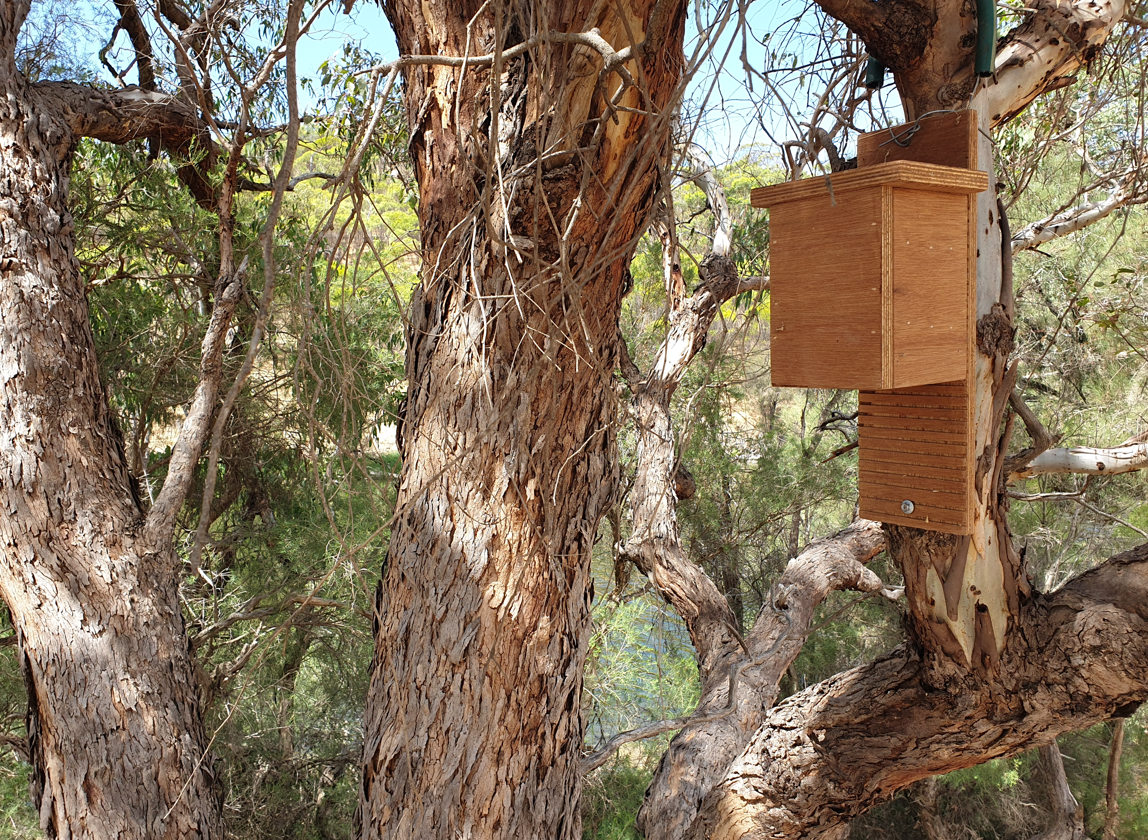Land-use change has reduced the natural habitat for hollow-nesting animals throughout the agricultural regions of Australia. The Eucalypt Woodlands of the Western Australian Wheatbelt were once the most common vegetation type across the Western Australian Wheatbelt, and the primary source of larger hollows in the landscape, due to the tall timber species that characterise the woodlands. The tall trees of the Wheatbelt, such as salmon gum, white gum, wandoo, morrell, blackbutts and flooded gum, create a variety of complex hollows as they mature, with different hollow sizes and forms being preferred by varying birds and animals.
Those species that rely on the eucalypt woodlands for nesting habitat in the wheatbelt have not only faced the loss of hollows from the extensive clearing of woodlands, but are also facing competition for those remaining hollows from introduced honeybees or kookaburras, which will happily use a wide range of different types of hollows.
To help offset the loss of vast tracts of these woodlands over the past 150 years, more than 130 nesting boxes have been installed by Wheatbelt landholders across Eucalypt Woodland bushland over the last 4 years – with another 70 still to go.
The boxes are designed to create habitat for microbats, possums and phascogales, among other species. Each of these species provide different ecosystem services in both the agricultural and unaltered landscapes, including pollination, insect control and management of mistletoe outbreaks.
If you would like to build your own bat box, here is a good design: https://www.ausbats.org.au/uploads/4/4/9/0/44908845/bci_multi-chamber_ba...
If you believe you might have eucalypt woodlands on your property please get in touch with Alex at agriffiths@wheatbeltnrm.org.au or 9670 3102 and dependent on the eucalypt species, size and condition of the remnant, we may be able to assist you with pest animal control, nest boxes and fencing to help protect those woodlands.


